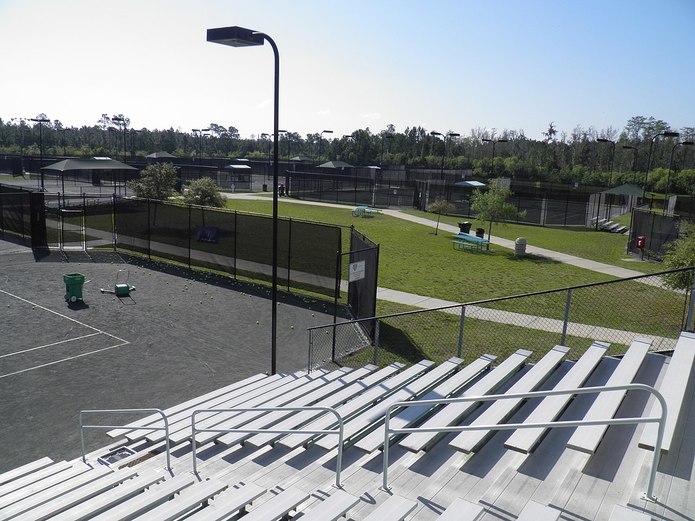The Daytona Regional Chamber of Commerce has been in our community for over 100 years! In our storied past are countless examples of how the Chamber has worked to serve the great city of Daytona Beach and our surrounding community.
Please take a moment to explore the following timeline to learn about the more than century-long history of your Daytona Regional Chamber and the development of our community over the last few decades.
Please share photos and content that can be added to the decades as we build this historical picture of our area. Just email the Chamber your photos and text information explaining your submission.
The Chamber’s Founding
With the First World War ending in 1919, Florida began to establish itself as a booming economy, the state’s increased agricultural production setting the stage for the coming real estate boom of the 1920s.
Amidst the growth of Florida’s economy, the Daytona Regional Chamber of Commerce was founded in 1919. At the time, the Chamber called the historic Burgoyne Casino its home.
In 1925, the areas of Daytona, Daytona Beach, and Seabreeze consolidated into one, and the young Chamber became known as the "Triple City Chamber." The express purpose of the Triple City Chamber was to “ensure more effective advertising” for the area… With a $200 operational budget.
Racing’s Roots in Daytona
While the Triple City Chamber continued to grow throughout the 1920s, so too did Daytona’s own sport of racing, which had been popular in the area since the early 1900s. In 1927, Henry Seagrave set a world land speed record on the Daytona Beach Road Course 203.79 mph. The Daytona Beach Road Course, which ran along A1A, along the beach near Beach Street, and back, was instrumental in the formation of NASCAR. Seagrave would set another world record in 1929, reaching speeds of 231 mph.
The First Natural Airport
By the early 20th Century, the sands of Daytona Beach had become a destination for aviation enthusiasts, who found the hard sand surface to be an ideal airstrip. In 1906, Charles Hamilton, the 12th person in the U.S. to earn a pilot’s license, piloted Florida’s first glider flight on the sands of Ormond Beach, and in 1910, Edward Andrews flew the first twin-engine plane ever built from Daytona Beach. For the next decade, throngs of aviators made their way to Daytona Beach, necessitating some regulations on the “natural airport.” In 1928, the City of Daytona Beach moved its aviation activities to Bethune Point along the Halifax, bringing an end to beach aviation.
“Burgoyne Casino, 1925” Photo courtesy of State Archives of Florida, Florida Memory, https://www.floridamemory.com/items/show/2216.
“Henry Seagrave and his Golden Arrow, 1929” Photo courtesy of State Archives of Florida, Florida Memory, https://www.floridamemory.com/items/show/150030.
“Biplane in Daytona Beach, 1928” ” Photo courtesy of State Archives of Florida, Florida Memory, https://www.floridamemory.com/items/show/35457.
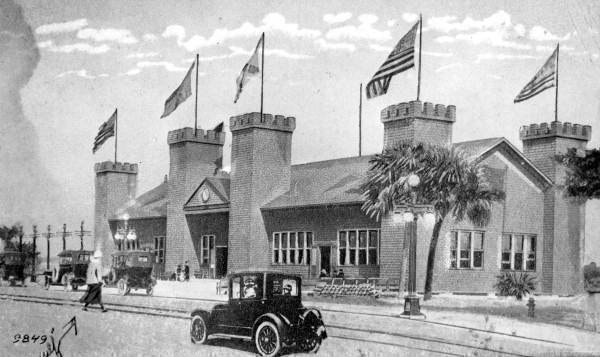


Looking Ahead
In the late 1920s and early 1930s, the Chamber began to take a futuristic look at its work in the Daytona Beach area. Knowing that it would need to broaden its tourist outreach, the Triple City Chamber opened offices outside of the state of Florida, planting roots in Birmingham in 1929 and Atlanta in 1930, in order to drum up business for Daytona Beach.
The Airport Finds its Permanent Home
In 1930, the City of Daytona Beach moved its airport from Bethune Point to its present location in the heart of Daytona Beach. The rough construction of the day included coquina runways and a sign made of an old wooden surfboard, which is now located in the airport terminal on the second level.
Racing’s Organizer Arrives in Daytona
In 1935, seeking to escape the Great Depression, William “Bill” France moved his family from Washington, D.C., to Daytona Beach. With little to his name, Big Bill set up a car repair shop at 316 Main Street, now home to the Main Street Station. By 1937, Bill France became the primary promoter for the recently established stock car races on the Daytona Beach Road Course, and by 1938, he was running the course himself. Some might say that the rest is history.
Fun and Games at the Boardwalk
Throughout the 1930s, as Daytona Beach’s economy continued to develop, so too did the area’s tourism. In 1938, amusement park rides made their first appearance on the Boardwalk, which now featured the world’s largest bandshell, built as a WPA project in 1937.
“Bill France” Photo courtesy of State Archives of Florida, Florida Memory, https://www.floridamemory.com/items/show/7630
“Boardwalk, 1939” Postcard by Walker News Co., courtesy of State Archives of Florida, Florida Memory, https://www.floridamemory.com/items/show/163003
“Beach Street, 1930s” Photo courtesy of Harry Smith, public domain.
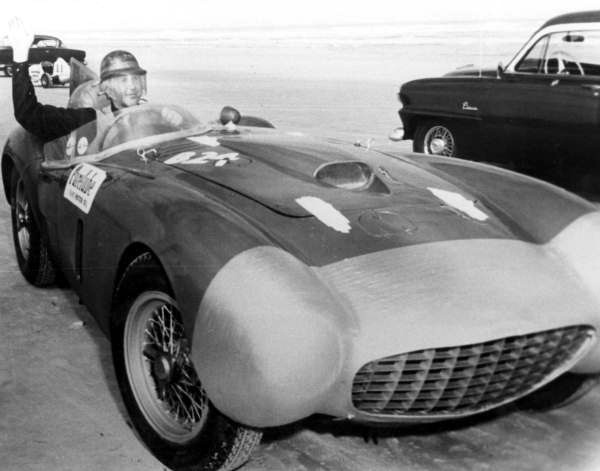


Looking Ahead
In the late 1920s and early 1930s, the Chamber began to take a futuristic look at its work in the Daytona Beach area. Knowing that it would need to broaden its tourist outreach, the Triple City Chamber opened offices outside of the state of Florida, planting roots in Birmingham in 1929 and Atlanta in 1930, in order to drum up business for Daytona Beach.
The Airport Finds its Permanent Home
In 1930, the City of Daytona Beach moved its airport from Bethune Point to its present location in the heart of Daytona Beach. The rough construction of the day included coquina runways and a sign made of an old wooden surfboard, which is now located in the airport terminal on the second level.
Racing’s Organizer Arrives in Daytona
In 1935, seeking to escape the Great Depression, William “Bill” France moved his family from Washington, D.C., to Daytona Beach. With little to his name, Big Bill set up a car repair shop at 316 Main Street, now home to the Main Street Station. By 1937, Bill France became the primary promoter for the recently established stock car races on the Daytona Beach Road Course, and by 1938, he was running the course himself. Some might say that the rest is history.
Fun and Games at the Boardwalk
Throughout the 1930s, as Daytona Beach’s economy continued to develop, so too did the area’s tourism. In 1938, amusement park rides made their first appearance on the Boardwalk, which now featured the world’s largest bandshell, built as a WPA project in 1937.
“WAACs learn how to use rescue floats, Daytona Beach, 1942” Photo courtesy of Library of Congress
“Naval Air Station Daytona Beach, 1944” Photo courtesy of United States National Archives
“Oil/gasoline and savings bond stamps, 1943” Photo courtesy of State Archives of Florida, Florida Memory, https://www.floridamemory.com/items/show/12024
“City Island Ball Park, 1946” Photo courtesy of State Archives of Florida, Florida Memory, https://www.floridamemory.com/items/show/153612
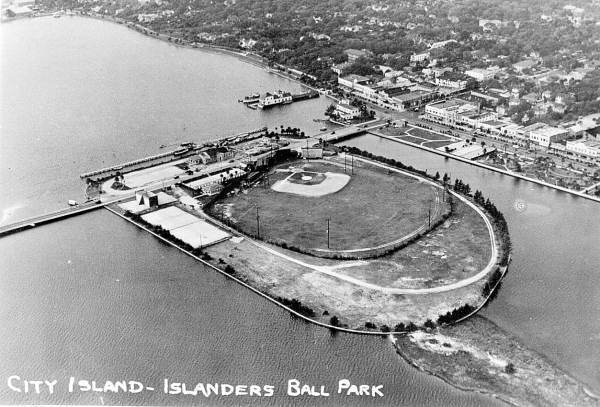



The Chamber Turns to Retirees
In 1953, the Chamber began to focus heavily on converting tourists to residents, specifically targeting retirees. During this time, the Chamber ran ads promoting not only the local churches, schools, and entertainment options, but also the air quality and climate of Daytona Beach, which allowed for better respiratory health. Ads informed tourists, “You’ll live 10 years longer in Daytona” and “Those who live here get more out of life!”
Enter, the Daytona 500
On February 22, 1959, Daytona Beach witnessed the Inaugural Daytona 500, the first race held at the brand new Daytona International Speedway. After 17 hours of racing—and three days of deliberations and newsreel reviews—Bill France declared Lee Petty the winner.
“Retirees in Daytona Beach”
“Daytona 500, 1959” Photo courtesy of State Archives of Florida, Florida Memory, https://www.floridamemory.com/items/show/75999
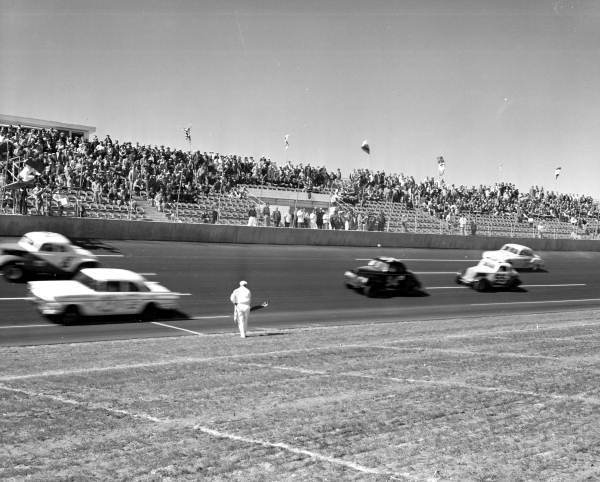

The Chamber Receives Accreditation
In July of 1964, the Daytona Beach Chamber of Commerce received accreditation from the U.S. Chamber of Commerce, becoming one of the first in the nation to do so.
Embry-Riddle Moves to Daytona Beach
In 1963, shortly after taking up his post as President of Embry-Riddle, Jack Hunt was informed that the base of the school’s flight operations, the Tamiami Airport in South Florida, would soon close. Hunt elected to temporarily relocate operations to Daytona Beach, a location with WWII-era barracks and classrooms that provided space for both the institute’s flight operations and campus. In April 1965, Operation Bootstrap commenced, and everything the institute owned was trucked or flown to Daytona Beach. Within weeks of the move, due to the hospitality of Daytona Beach civic and community leaders, including the Chamber, Hunt and the institute’s board decided to make the move permanent.
“Chamber Celebrates Accreditation, 1964” Article courtesy of the Daytona Beach News-Journal
“Operation Bootstrap, 1965” Photo courtesy of Embry-Riddle Aeronautical University Archives
“The Convoy Arriving in Daytona Beach, 1965” Photo courtesy of Embry-Riddle Aeronautical University Archives



Volusia Mall Opens
In 1974, Daytona Beach welcomed its first contemporary shopping mall. In its early years, the Volusia Mall was anchored by four stores: Ivey's, May-Cohens, Sears, and JCPenney.
“Volusia Mall, 1979” Photo courtesy of State Archives of Florida, Florida Memory, https://www.floridamemory.com/items/show/243522
“N. A1A” Photo courtesy of State Archives of Florida, Florida Memory, https://www.floridamemory.com/items/show/131228


Spring Break on the World’s Most Famous Beach
By the late-80s, Daytona Beach had overtaken Fort Lauderdale as the top destination in the country for college students on Spring Break, drawing in over 350,000 breakers annually. During this time, MTV began televising high-profile concerts and Spring Break specials from the Bandshell, which saw the likes of the Red Hot Chili Peppers, R.E.M., and Heart take its stage. The springtime flood of students and MTV into Daytona Beach continued until the turn of the century, when city officials discovered that the costs of spring break outweighed the revenue generation.
The Chamber Takes on Bike Week
This history of one of Daytona’s most iconic traditions, Bike Week, dates back to 1937 with the inaugural running of the Daytona 200. The event took a hiatus during WWII, and when it returned, began to develop a rugged edge. In 1986, tensions heightened; locals feared the visitors, and law enforcement and city officials were likewise displeased with the environment. Thus, city officials and the Chamber established a special task force aimed at improving relations between locals and visitors, expanding the magnitude of the event, and bringing some formal organization to Bike Week. Since 1988, the Daytona Regional Chamber of Commerce has been the official sponsor of Bike Week.
LPGA Finds a Home in Daytona Beach
By the late 1980s, in an effort to increase the Chamber’s relevancy in a changing community, George Maribel led the organization through a redevelopment of its vision. The new enterprise, known as the Directions 21 Initiative, centered on the philosophy that new ideas for community development would come from the community, not just the Chamber.
Out of the Directions 21 Initiative came the historic move of the Ladies Professional Golf Association (LPGA) headquarters to Daytona Beach in 1989. Armed with the slogan “We Want You,” the Chamber campaigned to bring LPGA from Texas to Daytona. The efforts of Maribel and the Chamber paid off, and LPGA has called Daytona Beach home for 30 years.
“Spring Break, Daytona Beach” Photo courtesy of Rindy Nyberg, Florida Public Memory, https://www.floridamemory.com/items/show/243919
“MTV Spring Break Concert, 1986”
“Bike Week” Photo courtesy of Gamweb, public domain.
“LPGA Golf Course” Photo courtesy of State Archives of Florida, Florida Memory, https://www.floridamemory.com/items/show/243601




Hollywood Hits Daytona Beach
The 1990 film Days of Thunder, starring Tom Cruise and Nicole Kidman, was set and partially filmed in Daytona Beach. Days of Thunder follows Cruise’s character, Cole Trickle, as he tries to make it big in the world of NASCAR. After sustaining an injury in the Firecracker 400, Trickle spends his recovery time in Daytona Beach where he falls for Dr. Claire Lewicki (Kidman), a neurosurgeon at Halifax Hospital, and eventually wins the Daytona 500. Scenes from the movie capture the Daytona International Speedway, A1A, the sandy shores of Daytona Beach, and even the halls of Halifax Hospital.
Tennis Time
In 2000, the Chamber—then called The Chamber, Daytona/Halifax Area—was instrumental in establishing a U.S. Tennis Association (USTA) presence in Daytona Beach. The collaborative effort between the City of Daytona Beach, County of Volusia, Central Florida Sports Commission, Consolidated-Tomoka Land Company, Convention and Visitors Bureau, and The Chamber led to the development of the state-of-the-art Florida Tennis Center, located adjacent to LPGA. To this day, the 24-court stadium is home to the Greater Volusia Tennis League and hosts numerous USTA tournaments every year.
The Best Class of All Time
In 2018, the Chamber recruited community members to participate in the 38th class of Leadership Daytona. Class XXXVIII was posed with one of the Chamber’s greatest challenges: Putting together a stellar celebration for the Daytona Regional Chamber of Commerce’s Centennial year in 2019. From both the Chamber and Leadership Daytona Class XXXVIII, thank you for celebrating 100 years with us!
“Florida Tennis Center” Photo courtesy of Gamweb, public domain.
“Members of Leadership Daytona Class XXXVIII, the Best Class of All Time (BCOAT)”
